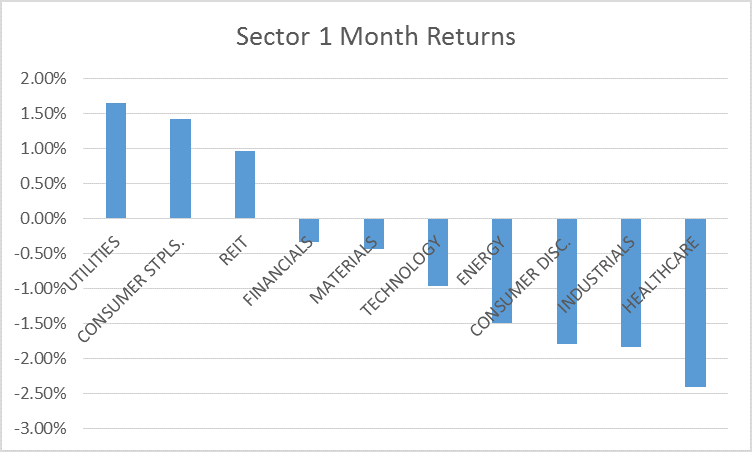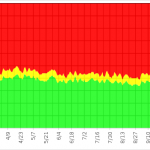The short term leadership is shifting as the dollar comes off its lows. Energy and materials had been leading the market during the recent period of dollar weakness. As the dollar found its footing over the last month, defensive sectors took the lead.

Whether this short term shift continues will likely depend on whether the Fed is right about the economy and how the market reacts to higher interest rates. What produced this pullback in materials and energy and the rally in defensive stocks was the dollar’s reaction to the recent more hawkish Fed statements. A higher dollar is now associated in the market’s mind with weaker global growth and potential troubles outside the US. Higher dollar = risk off at least for now. History says though that if the Fed is right and growth does re-accelerate in Q2 and beyond, then stocks will shrug off the short term weakness and move higher with better growth and earnings. So, is the Fed right about growth? Their track record surely doesn’t inspire much confidence but hey, blind squirrels and all that.
For now, the longer term momentum remains with the weak dollar investments, an indication that for now, the market isn’t really buying the Fed’s accelerating growth scenario. Bond markets seems to back that up with real rates still negative.

Energy and materials are obvious beneficiaries of the weaker dollar. Financial benefitted from a yield curve that had briefly stopped flattening. The contrast between the 3 month and 1 month returns can essentially be summed up by the phrase risk on/risk off. Or if you don’t like that one, how about cyclical versus non-cyclical. The obvious conclusion the market has drawn is that a weak dollar is positive for US growth because it is positive for global growth. In the short run that may be true but longer term we do not want a weak dollar. Or a strong one for that matter; stability should be the goal. In a sense it is the volatile dollar that has gotten us in this mess.
















Leave A Comment